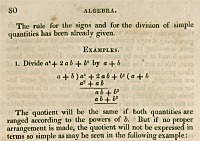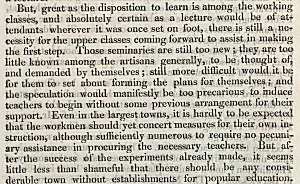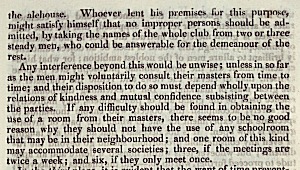Contents ![]() | The earliest public libraries
| The earliest public libraries ![]() | Learning organisations
| Learning organisations ![]()

Schools of arts and the mechanics institutes
Page 1 of 2 | Next
A new kind of institution opened in Edinburgh in 1821. Its name said it all: 'The School of Arts of Edinburgh for the Education of Mechanics in Such Branches of Physical Science as are of Practical Application in their Several Trades'. Its first classes were held in October. They opened a new era in British education.

Leonard Horner was the man behind the school. He was a graduate of Edinburgh University and a member of the Royal Society of London, where he stayed between 1804-14. Returning to Edinburgh he moved in the same circles as the city's leading thinkers and, like them, became interested in the social conditions and education of the working classes. A chat about mathematical training touched on the 'want of this instruction' and 'the expence (sic)' putting it 'out of the power of working tradesmen to obtain it'. Horner was stimulated to solve this problem. He very quickly planned, consulted, and formed a committee to drive the idea on.

The new institution gave evening classes for the city's artisans. The school provided instruction in chemistry, mechanics and architecture, with more courses being added later. Although mathematical instruction had been the original idea, it was not offered as a subject. Instead the students organised their own provision - the more able teaching the rest. The school was granted accommodation by the Grand Lodge of Scotland in Freemasons Hall, Niddry Street. Later it had its own premises in Adam Square.
Page 1 of 2 | Next
In this section:
Schools of arts and the mechanics institutes | Working Men's Institutes | Trust public houses
Contents ![]() | The earliest public libraries
| The earliest public libraries ![]() | Learning organisations
| Learning organisations ![]()